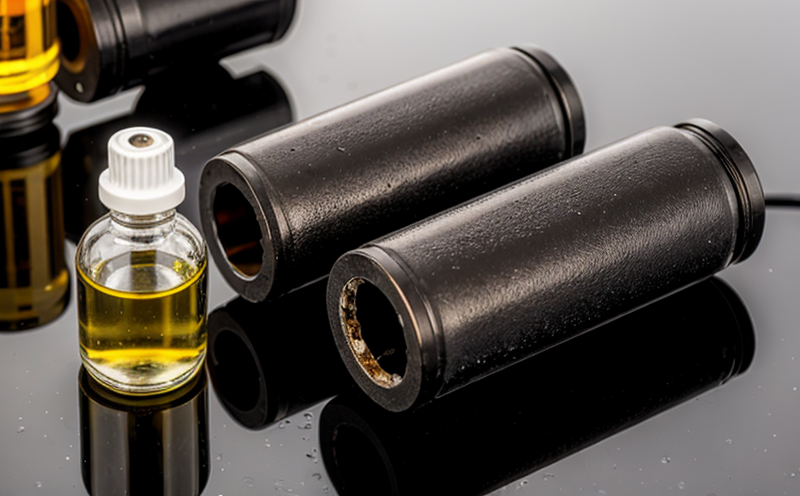EPA 1664 Extractable Hydrocarbons Oil and Grease Test in Water
The EPA 1664 method is a standardized protocol used to determine the concentration of extractable hydrocarbons, oil, and grease present in water samples. This test is particularly important for environmental monitoring and compliance with regulatory standards set by organizations such as the Environmental Protection Agency (EPA) and other relevant bodies.
Extractable hydrocarbons, oil, and grease are indicators of contamination from various sources including petroleum products, industrial processes, and urban runoff. Accurate testing of these contaminants is crucial for water quality assessment, environmental protection, and public health. The EPA 1664 method involves extracting the hydrocarbons using a solvent and then quantifying them through infrared spectroscopy or other analytical techniques.
The test procedure typically begins with the collection of water samples from various sources such as rivers, lakes, and wastewater treatment plants. These samples are then processed according to the EPA 1664 protocol which includes sample conditioning, extraction, and analysis steps. The extracted hydrocarbons are identified using spectroscopic methods or other analytical tools that can differentiate between different types of hydrocarbons.
The EPA 1664 method is widely recognized for its accuracy and reliability in determining the presence and concentration of extractable hydrocarbons in water samples. It is used by regulatory agencies, environmental consultants, and industrial facilities to ensure compliance with environmental regulations and to monitor water quality.
One of the key advantages of the EPA 1664 method is its ability to provide a detailed breakdown of different types of hydrocarbons present in water samples. This information can be used to identify the source of contamination and develop effective remediation strategies. Additionally, the test results are highly reliable and reproducible, making it an ideal choice for compliance testing.
The EPA 1664 method is also cost-effective compared to other hydrocarbon testing methods, as it requires minimal equipment and expertise. The use of standard protocols ensures that results from different laboratories can be directly compared, further enhancing the reliability of the test.
In conclusion, the EPA 1664 Extractable Hydrocarbons Oil and Grease Test in Water is a critical tool for environmental monitoring and compliance testing. Its accuracy, reliability, and cost-effectiveness make it an essential method for ensuring water quality and protecting public health.
Applied Standards
| Standard | Description |
|---|---|
| EPA 1664 | This standard provides the method for determining extractable hydrocarbons, oil, and grease in water samples. |
| ASTM D92 | American Society for Testing and Materials Standard Method for Distillation of Petroleum Products to Determine Volatile Content. |
| ISO 15430-2 | This standard specifies the procedures for sampling, handling, and analysis of volatile organic compounds in water. |
Why Choose This Test?
- Accurate determination of extractable hydrocarbons, oil, and grease in water samples.
- Compliance with regulatory standards set by the EPA and other relevant bodies.
- Identification of contamination sources for effective remediation strategies.
- Rapid and reliable results that can be directly compared across different laboratories.
The EPA 1664 Extractable Hydrocarbons Oil and Grease Test in Water is an essential tool for environmental monitoring, water quality assessment, and compliance testing. Its accuracy, reliability, and cost-effectiveness make it a popular choice among regulatory agencies, environmental consultants, and industrial facilities.
Quality and Reliability Assurance
- The EPA 1664 method is widely recognized for its accuracy and reliability in determining the presence and concentration of extractable hydrocarbons in water samples.
- The use of standard protocols ensures that results from different laboratories can be directly compared, further enhancing the reliability of the test.
At our laboratory, we adhere to strict quality control procedures to ensure the accuracy and reliability of every test result. Our team of experienced analysts uses advanced instrumentation and follows standardized protocols to provide precise and reproducible results.





